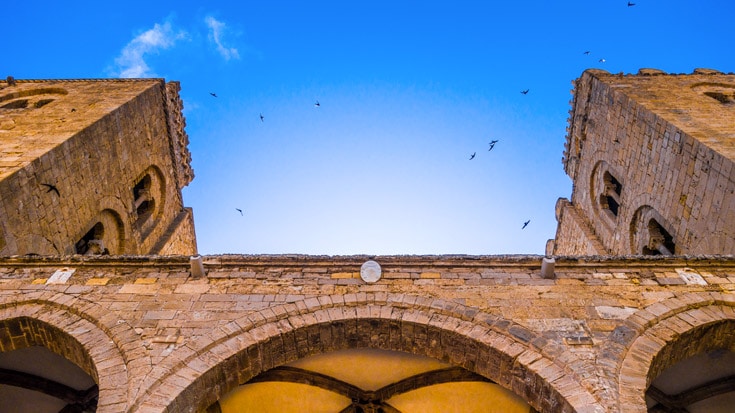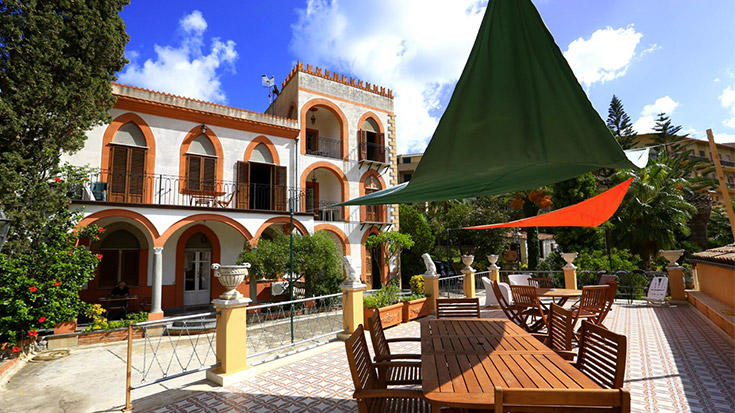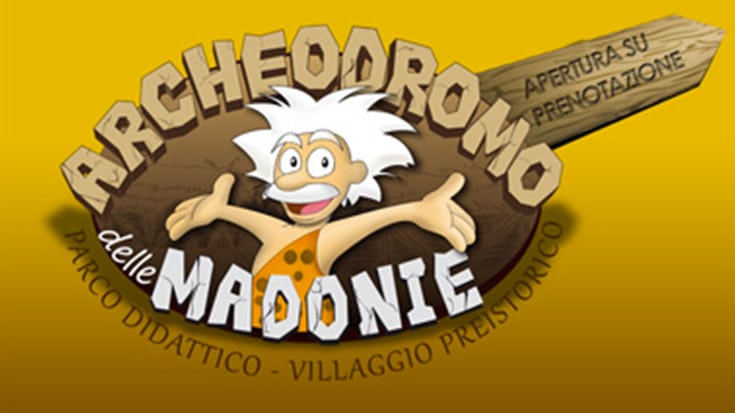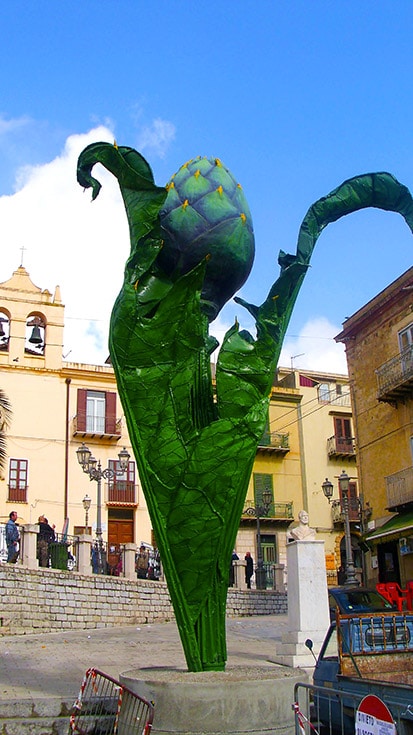Cefalu by insiders – Sicily guide
Cefalu
You’ve already seen Cefalu referred to as the Pearl of the Mediterranean. You’ve read about its beaches, its Arab-Norman Cathedral, and more. You’ve seen words like “beautiful”, “charming”, and “rustic”. All true. But we want to go further. We want to avoid these advertising cliches and offer a different perspective – one from insiders.
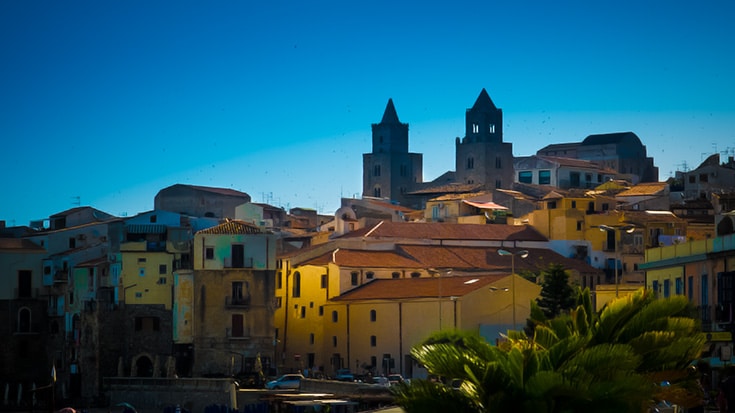
Imagine the traveler as a painter and his or her trip as a canvas to fill. Cefalu puts in your hands a rich palette of unique colors. And when you pick up your brush all you have to do is close your eyes and decide the colors you want.
Many when they think of Sicily first think of the blue of the Mediterranean and the gold of their beaches – and they’re right. But there’s also a bit of white. While it might sound crazy, one experience that is special in Sicily is the snow!
That’s right. There are mountains surrounding the city, and the snow always arrives right on time at the end of each year. In this area we are accustomed to skiing – you see, it’s not all boats and fishermen.
Another color for your painter’s palette is green: the color of the countryside, rich in olive trees and plantlife of all kinds. A green that will become thicker and thicker if you enter the woods of the Madonie nature reserve. We recommend that you do, especially if you want to know the more authentic and rural side of Sicily.
What else you can’t you miss in your painter’s palette? Of course! Red!
This is the color that will give character to your evenings in Cefalu, especially when you watch a sunset by the sea. Do it while sipping a glass of Syrah or Nero D’Avola. You will not want to be anywhere else.
Blue, Yellow, Green, Red, White. Have fun seeing them, combining them – you will pull off something magical. And speaking of magic, don’t forget black. Cefalu has a mysterious side, a side that is alive in the nighttime, almost occult. What are we talking about? To find out you’ll have to read to the bottom of the page.
Legends, gossip, and the “goods” on Cefalu
If you plan your holidays in Cefalu according to an “official tourist guide”, you can expect an avalanche of boring information.
But maybe you should get some information from other sources, and then decide for yourself whether there’s anything boring about Cefalu.
Here we’ll give you the goods that no one else, either in person or on the internet will give you – with the rest if you come visit our school. In the meantime, start taking notes.
The origins of Cefalu
The history of Cefalu begins in the days of the Greeks, when the first inhabitants had a small town on the Rock. Their life was concentrated around the Temple of Diana, still a pilgrimage destination for scholars and enthusiasts of archaeology.
The geography and terrain made the city of Cefalu a virtually impenetrable fortress. In Roman times people started to fill up the area by the sea, and they built a wall to protect the town and laid out their town with a typical fishbone structure. Portions of the walls are still visible to the north, as well as parts of the four gates of the city. The only one which remains fully intact is at the marina: the splendid Porta Pescara.
Cefalu Cathedral and its symbols
The way Cefalu currently looks, however, is basically due to the Normans. When the legendary Roger II decided to move his court from Palermo to Cefalu, in order to gain favor with the Pope he decided to give the city and the catholic church a cathedral (UNESCO World Heritage from 2015). Not just any basilica, but a real jewel for which Byzantine masters made the mosaics, Arab expert laborers were used, and a team of theologians to establish a precise visual narrative of the Transfiguration.
Gold and light are protagonists of this narrative, completely devoted to recreating the scene in which Jesus goes up Mount Tabor in Palestine and on top of it becomes light and spirit, with the patriarch Moses to his left and the prophet Elijah to his right. When the faithful came up to the Cathedral (the cathedral really is elevated above the town center) they were dazzled by the light filtered through the windows and the gold mosaics.
Another link to the transfiguration narrative can be seen on the two towers. Though the towers may look identical at a distance, a close examination reveals something else: one tower’s battlement is encircled by “flames” (the Old Testament tells of Elijah being carried to Heaven in flames). The other with Ghibelline merlons, also known as “table merlons” (representing Moses’ tablets).
Light plays a central role in the building. Indeed, one strange event occurs only once a year, a legacy of the legendary Norman King to this day: Every February 28 a beam of sunlight passes through a small slit in the transept and shines with incredible precision upon the point where Roger II occupied his sarcophagus (though the body now lies in Palermo). Why is this so extraordinary? February 28th is not just any date: according to legend Roger II died on this day in 1154!
If you are interested in the topic, Solemar organizes seminars on legends, myths, and superstitions in Sicily – an excellent opportunity for you to learn valuable information on the more occult traditions of Sicilian culture.
The looming presence of the Sicilian Church
Roger did not stop with the building of the Cathedral and the reorganization of the city. The Norman king decided to move the bishopric to Cefalu, making it one of the most important and influential cities on the island. Bishops in Cefalu exercised a power often greater than that of political authorities: they were able to decide on every aspect of public life, and often came into conflict with city administrators. The bishops soon achieved a monopoly over charitable works, and established a sort of primitive lending bank (you will find the building in via Mandralisca) that they used to enrich themselves. They enjoyed full freedom in managing their financial affairs, thanks to which they were able to add a great number of properties to their portfolios including in the surrounding countryside. And they were able to undertake some pretty impressive projects. Take, for example, the reconstruction of the Cloister of the Cathedral: around 1600 the cloister was actually dismantled, the ground lowered nearly five meters, a chapter house and two chapels built, and the cloister completely reassembled. This scarcely necessary operation was done so that the Bishop would not have to walk through the Cathedral on his way to the Cloister, his home now connecting to it directly. Not cheap!
The fact that there is a bishop in Cefalu has always had tremendous influence on public opinion in Cefalu, even today. The cefaludesi (natives of Cefalu) have an added level of piety knowing that theirs is the city that houses the bishop. Witness the stormy relationship the locals have to this day with magician Aleister Crowley, to whom neither a museum nor even a marker has ever been dedicated – despite his being an international figure who lived in Cefalu, and who draws visitors to the city just for that reason every single year.
Of course, the reach of the Church extends beyond Cefalu. Did you know for example that the skull of St. Anne (the mother of Mary) was “stolen” by the Knights Templar and hidden in the region? Today it is located in Castelbuono, and for centuries was hidden and protected by the powerful Ventimiglia family, linked for many years to the religious establishment in Cefalu.
The medieval laundry
The public can have strong opinions – and not just because of the Church. A wonderful spot also inherited from the Middle Ages is the Medieval Laundry (U Ciuni, i.e. “the river” in Sicilian). In this magical place where the waters of the Cefalino river gather before flowing into the sea, cefaludesi grandmothers used to wash clothes and make curtigghiu ( “gossip” in Sicilian). Who knows how many gory secrets were told and strong opinions expressed about so-and-so, how much “dirt” on the residents of Cefalu was washed away by the waters of this river! But fear not: some of these stories are still known. At our school, we have stories – both old and new – to paint you a picture of this wonderful place with its colorful residents.
Summer in Cefalu and the beach
Well, it’s obvious that those who plan to enjoy their holidays in Cefalu expect a beach holiday. But let’s face it, after a few days the beach can be a tad boring. And to be even more honest, there are times of year when the main beach becomes so supercrowded that you’d better be prepared to do a little gymnastics with your sunbathing: long jumps to avoid walking on the beach towels of the other bathers, acrobatics to dodge frisbees and volleyballs. You may even need a road map to find your own corner of the beach.
So here are some tips about the beaches from some true insiders for your benefit.
A. Castel di Tusa beach. This beach is farthest from Cefalu, but should be suggested if only because Google Maps has awarded it the blue flag (we don’t know what this means, but it’s cool). Expect crystal clear water and a beach with big rocks. Acrobatics not advised. The Tusa area is very interesting to visit because of a number of pieces by artist Antonio Presti (pyramids, windows overlooking the sea, and more called “Fiumara d’arte”).
B. Pollina beach. This beach is about 15 km away. It is usually frequented by local visitors and was the site of the legendary Valtur vacation village until not long ago.
C. Sant’Ambrogio beach. A small-pebble beach frequented by locals (it is now the favorite beach of politicians and Sicilian VIPs) but also by foreigners (who after years of return visits become insiders also). There are two ‘lidos’ (beach bars) and a very nice restaurant to eat at.
D. Coast House beach. This beach is within walking distance (about 3 km from Cefalu city center) and reachable by bike. It’s a pebble beach, and the seabed is easily visible through the clear water with rocks that serve as habitat for fish. A good place to fish for octopus – so be prepared.
E. Kalura beach. Certainly the most visually stunning coastline accessible from the Cefalu town center. A small basin with many giant rocks. Very Instagram-friendly.
F. Mazzaforno beach. It is situated along the SS (Strada Statale or highway) heading west. As soon as you arrive at the exit, continue right over the small bridge and head towards the sea. Sandy beach with very few people (though obviously not in August).
G. Salinelle beach. To reach this beach, head west and at one point as the road seems to curve left, you will catch a glimpse of the sea to your right. This wide and sandy beach is frequented by locals. The sea is not as spectacular as the natural environment. Ideal place to fly kites or do some kitesurfing or windsurfing. Sometimes you can even do some surfing on the water (yes, it is very windy). On the beach there is a bar where you can eat and cool off with a nice beer.
Cefalu’s summer events
If you decided to come to Cefalù as for the summer holidays, you’re probably looking for some tips on events to see. Well, Sicily is a holiday year-round: wall-to-wall festivals, musical and cultural events! Let’s find out more.
Defying gravity on a beam covered in fat
Events and festivals in Cefalu have always been linked to local products and popular traditions – especially religious ones.
Perhaps the event most heard about is the Festival of St. Salvatore, held every year August 4-6. The final day is undoubtedly the most action-packed: you can watch the procession, take a stroll and visit all the waterfront stalls, and most importantly, watch from the pier the ancient and enormously entertaining game of “Ntinna a mari”.
What is it? Very simple: a long beam is suspended a few meters above the water with a flag placed at the end of it. The object of the game – whose contestants are local Cefalu fishermen – is to grab the flag before falling into the sea. But there is a twist: the beam is covered in animal fat. If you think it sounds easy, you are mistaken. ‘Ntinna a mari’ has even landed itself in the Guinness World Records. The winner of the latest event was a young cefaludese: Nino Papa.
Throughout the month of August the streets of Cefalu are filled with music and color thanks to other events like the Kef’Art Festival, the Camp@rt Festival, and festivals dedicated to traditional cuisine like the Pasta a Taianu (authentic Cefalu food).
Musica and Street Art
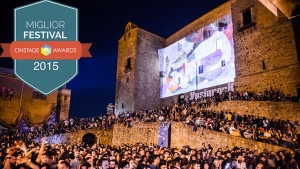
The advice we always give is not to look at just Cefalu, but to take a look at the surrounding villages as well. Each is a short drive away and a must-see.
Keep an eye especially on the town of Castelbuono (twenty minutes by car from Cefalù), and in particular the Ypsigrock Indie Rock Festival (indie-rock, alternative rock, electronic), a musical event of international appeal, recently voted Best Festival in Italy.
Another festival that is gaining momentum is the Valdemone Festival, held in picturesque Pollina in August and dedicated to street artists. If this is your thing, do not miss it.
Step on it!
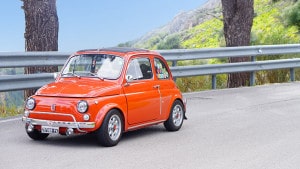
In May the Madonie Mountains become the site of the prestigious and flamboyant Targa Florio car race. It is the oldest auto race, at one time an international event, now transformed into a simple gathering of vintage cars.
Leaving aside the reasons for the change, the event still attracts many automobile fans each year. A number of motorists participate in the revival of the retro style and atmosphere of the ‘50s and ‘60s (goggles for men, scarves for women). Of course, it’s no longer a wild and crazy race as in olden days so some cars just drift along at cruising speed. But if you are a car fan, you should not hesitate. Check it out.
Snow in summer?
Finally, we recommend a celebration whose name may sound like a joke – the Snow Festival – held every year in Polizzi Generosa. Why a joke? Apart from the obvious – the idea of snow in Sicily – the festival is held in the hottest part of the summer in July. But in lovely Polizzi, on top of getting to breathe the fresh mountain air, you’ll discover all the ingenious ways that Sicilians store ice even in the hot summer months and distribute it across the island, ensuring all ice creams and granitas are super fresh.
Action!
Because of its beauty, Cefalu is a perfect setting for films, music videos, and television commercials. A paragraph would not be enough to list the names of all the artists who have filmed scenes in its alleyways or on its terraces overlooking the sea. But we’ll give three good examples – entertaining little gems with clips you can watch online.
Gordon Ramsey in Cefalu
We start with a global legend. Hands up if you have never heard of the multi-starred chef Gordon Ramsey. Masterchef USA, Hell’s Kitchen, Kitchen Nightmare – what rock have you been living under?
In this video we see the great chef go hunting for octopuses in the stormy sea of Cefalu – even biting one in the head to kill it.
Uncle Oscar
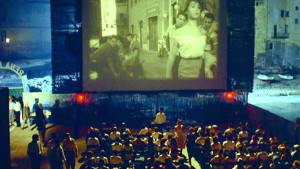
No, we’re not talking about our own uncle, but the most popular and coveted statuette in the world.
Do you recognize the picture on the right?
If you answered “Cinema Paradiso”, you win a prize.
This film by Sicilian director Giuseppe Tornatore was filmed in Bagheria and Cefalù, and was awarded the 1990 Academy Award for best foreign film.
The scene to the right was shot in one of the most enchanting places of Cefalu, the Old Port, which to the locals has always been known simply as “il Molo” or the pier. If you have not seen this film, quickly get in your car and go buy the DVD.
Mona Lisa who?
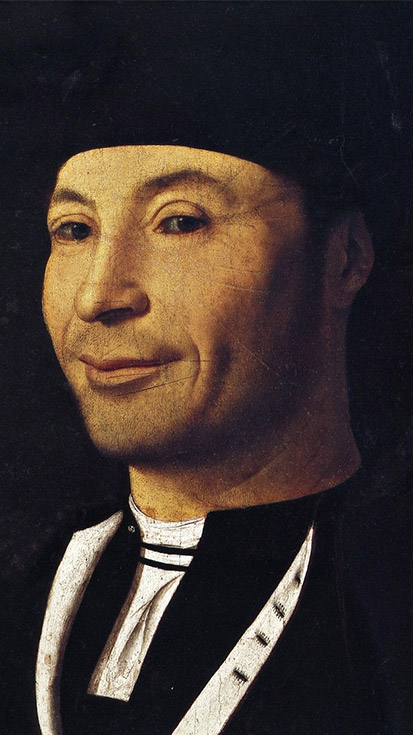
It is always said that the Mona Lisa symbolizes enigma and mystery. There are whole books and documentaries dedicated to her smile, one that is beautiful and perhaps a little unnerving at the same time. Well, when it comes to such iconic smiles, every art lover knows the portrait on the right.
When enjoying holidays in Cefalu, one cannot help but run into this face. Shops, bars, travel agencies. You will find it everywhere and in a variety of shapes and sizes.
We’re referring to the Portrait of an unknown sailor by Antonello da Messina made by the Sicilian between 1465 and 1476 and presently at the Mandralisca Museum in Cefalu (not the Louvre, you read it right). This portrait, influenced by the Flemish style but certainly the result of the extraordinary talent of Antonello, has over the years become one of the most important symbols of Cefalu, envied and celebrated throughout Italy and the world.
Important writers like Leonardo Sciascia have dedicated very passionate pages to this interesting sea dog. Vincenzo Consolo him even based an entire novel on him, “The Smile of the Sailor” (1976). There we find perhaps the best description of it yet made:
“An ironic smile – wry and at the same time bitter, as if of one who knows many things and has seen many things”
Exactly right. A smile that manages to say a lot about the Sicilian soul – impenetrable to be sure, but at the same time having a charm and an intelligence. A smile that is an attraction for any traveler.
Cefalu for families
There are several reasons why Cefalu is an ideal destination for families.
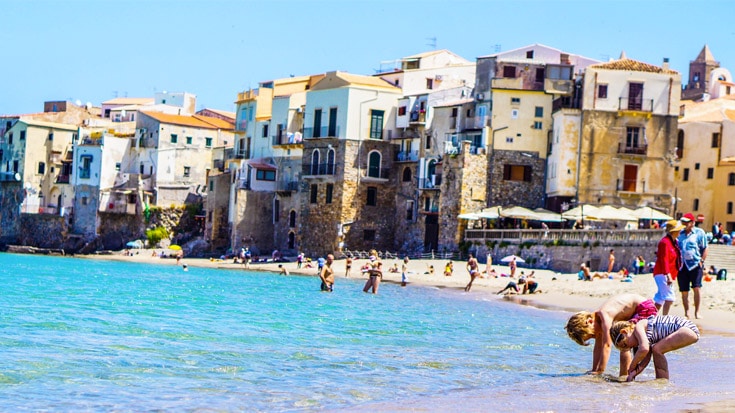
On top of everything else, Cefalu is very convenient and accessible. While you get to enjoy the advantages of a small town (everything is within walking distance, Cefalu is absolutely safe, and it’s easy to deal with local people), on the other hand you also get to experience an international environment with many diverse people, events, food and drink on offer.
Swimming fun
The beach has lidos that offer services specifically for toddlers including play areas. On the waterfront you can take long walks, go cycling, fly kites, and more. And then – the best thing for the hot days – you can sit at a table in a coffee shop or at a kiosk and cool off with a delicious ice cream!
If you want to spend a day away from the beach, an alternative is the excellent water park “Acquaverde”. It is just 10 minutes’ drive from Cefalu and is certainly an ideal place to mix things up a bit with the family. You can even book a visit with the wellness program to relax your body and recharge your batteries before enjoying the nightlife back in town.
Fresh Mountain Air
Another great thing for kids is some simple fresh air – mountain air. We recommend a trip to the Madonie Adventure Park, where you can indulge in tree climbing, taking mountain bike rides, horseback riding, a bit of mountaineering with map and compass, and much more. You can also take the tour as an excuse to have fun yourself, if you like.
Cefalu without the hotels
An insiders’ guide can’t avoid recommending for families what is probably the best solution for accommodation overall. Cefalu is full of hotels, but sometimes being stuck in the middle of tons of tourists and a chaotic environment makes handling the kids harder. If a more controlled situation is what you’re after, then Villa Caterina is certainly the best location – especially if you want to experience all the color Cefalu has to offer.
In this beautiful building are spacious apartments equipped with full kitchens, air conditioning, free wi-fi and everything you need to enjoy your stay. But the highlight of the villa is undoubtedly the garden. Here your children can play in the open, jump in the small wading pool, play with turtles, watch the goldfish pond, and have fun our small and very sweet dog I.v.a.! The villa is a safe, quiet environment that is still within walking distance of everything you want to see in Cefalu.
Cefalu in Winter
The beauty of the sea isn’t any less at other times of the year. Cefalu is no exception, and retains its charm even in the winter months. Taking a walk on the boardwalk when all the tourists have cleared out is proof: the empty beach with only the sound of the waves in your ears is a wonderful thing.
Those who like peaceful adventures cannot afford to miss this opportunity. See all the sights will avoiding the summertime hubbub. Cefalu in winter satisfies virtually every type of traveler.
To the mountains!
If you enjoy hiking, you can take a little trip to the Parco delle Madonie nature reserve, bike to the Sanctuary of Gibilmanna, and then if you want to stretch your legs, walk the paths that run through the forests of the reserve. Another option is the Guarneri forest, located just above the town of St. Ambrogio. There, too, the nature is very much alive and there is a spectacular view. Either way, it’s an excellent choice.
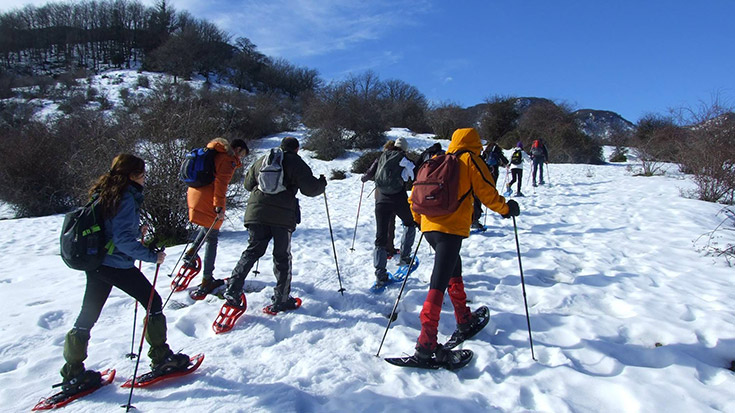
Surf & Snow – in Sicily you have both
As mentioned, the mountains around Cefalu are covered with snow in the coldest months. If you love the hills and skiing and snowboarding are two things you are familiar with, you should definitely spend at least a day in the area around Piano Battaglia. It will sound absurd, but the geography and climate can allow you to do a very special ‘two-fer’: waves in the morning and snow in the afternoon. Experienced holidaygoers do this and return in the evening all smiles. For the most bang for your buck, follow their example.
If you are renting a car during your stay in Cefalu and have children in tow, we recommend a visit to a very special place, the l’Archeodromo Madonie. This fantastic location will allow you to spend entertaining hours engaged in experimental archeology: you can light a fire like they did back in the Stone Age, learn how to work stone, bone, and wood, and find out about the earliest development of weaving, agriculture, and more.
Winter events
Whoever thinks that Sicily is only open for business during the summertime is mistaken. The fun continues even into the winter months. Whether it’s fairs and festivals, music concerns and events, film premieres or dance – Sicily is ready for year-round holidays.
Holidays in masks
To give you an example, when it’s time for Carnival, you can participate in the parade organized every year in Termini Imerese. Or try the Carnevale delle Madonie di Castellana organized held jointly in a number of municipalities in the Madonie region thanks to a collaboration of young students, skilled workers, dealers, and local associations.
Easter surprises
During the Easter season at the end of March and beginning of April, you can participate in the Easter processions and ceremonies that take place in almost every village of the Madonie, characterized by time-tested rituals that have been handed down for centuries. If you are passionate about old traditions and want to experience Sicily at its most authentic, this is certainly an opportunity that can’t be missed.
Another important event is Earth Day, held the third week of April. The event aims to promote environmental awareness and improvement of the region, and is open to all, both young and old.
Easter Sunday in the municipality of Gangi has a particularly rustic flavor with devotees competing in a race in costumes made of poor material including bread and vegetables. It is, however, a peaceful contest without the usual conflict among different brotherhoods in the old Sicilian processions.
Street Food and Bio
Also in April – in Cerda – there is a special festival dedicated to its most successful local product: the artichoke. And we’re not just talking about eating. For residents of Cerda it’s practically an object of worship. Suffice it to say that at the heart of the main square they erect a huge statue of a giant green artichoke!
In the month of October, Sicilians dedicate themselves to collecting olives. This is an activity that we recommend to all lovers of nature and rural life.
To try it, all you really have to do is a simple search on the web: different farms offer guided weekends where you can participate in all aspects of organic olive oil production – everything from collecting to grinding at the mill to bottling.
In short, the right time to visit us is up to you. We have plenty of excitement year-round.
The Beatles and Led Zeppelin in Cefalu?
Probably not everybody knows that these legendary, world-famous bands have had a special connection with Cefalu, a city that is dark and mysterious as we have said. That connection is a certain name that you may recognize a little, but one you will certainly learn more about when you decide to visit us for your holidays in Sicily.
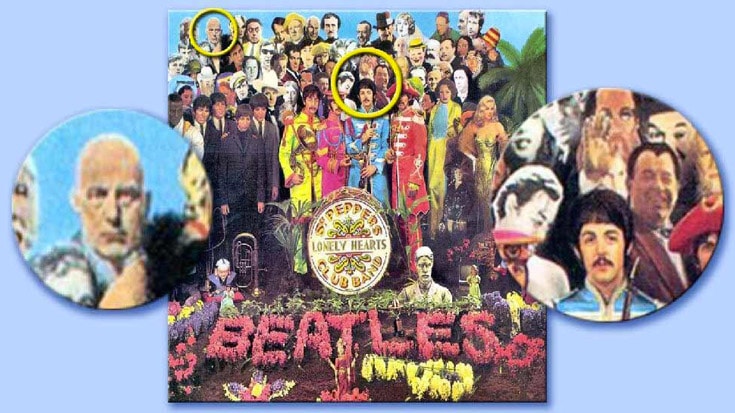
We are talking about the Englishman Aleister Crowley, magician, occultist, esotericist, but also accomplished poet and mountaineer of world renown. It was Crowley who in 1920 established the legendary – and some would say notorious – Abbey of Thelema in a house not far from our Villa Caterina.
It was in that ‘Abbey’ that Crowley undertook his great social experiment involving a special select group, and centered around a cult of his own creation. This tiny cult with its eccentric members immediately inspired confusion and indignation in the small and traditional Cefalu of the 1920s. Because of the outrageous costumes of the Thelemites, their unorthodox (some would say depraved) sexual practices, and even ritual sacrifices, the presence of English magician and his group was never accepted by the locals. Both the Church and the Fascist regime fueled public outrage toward him – going so far as to accuse him of Satanism – before he was finally deported by Mussolini in 1922. But the story goes even deeper: it appears that Crowley may have been working for British intelligence during his stay in Cefalu gathering information on Mussolini’s regime. Documents related to Crowley’s intelligence work are classified in the UK even today!
However uncomfortable the figure of Crowley makes some – even today – there is no question that he still inspires worldwide interest, attracting hundreds of occultists and ‘magick’ enthusiasts to Cefalu every year. Among them, many prominent figures of the international music scene including members of Led Zeppelin and The Beatles. You can tell the interest that The Beatles had in Crowley just by taking a glance at the famous cover of the album “Sgt. Pepper’s Lonely Hearts Club Band”. We have it here for you to look at – the distinguished looking bald man is none other than Aleister Crowley.
The Temple of the Sun
Cefalu’s magical roots go far beyond Crowley, though, and back into the myths that existed at the time it was founded. An excellent example is the Temple of Diana, built on La Rocca in the ninth century B.C. as part of a cult dedicated to the sun.
Recent studies in archaeoastronomy have shown that the front entrance is oriented exactly to the west where the sun sets during the spring and autumn equinoxes. The absolute precision with which the ancient builders have made these calculations is staggering. When you are at the ancient entrance, check the compass yourself and you will be amazed.
Cuts in time
Magic, mystery, esotericism. These themes are inextricably interwoven in the Sicilian folk traditions. Cefalu still has its ancient magical knowledge and uses it every day, almost always mixing it into the beliefs of the official religions.
A striking example is that of fishermen who armed with a knife, ‘cut’ tornadoes and thunderstorms, marking crosses in the air. As they do, the fishermen pray and recite incantations. They invoke the saints, the Virgin Mary, even Christ. Take a stroll to the old port early in the morning when you’re here. If there is bad weather and you’re lucky you see it done live and photograph it. That way your friends will believe you.






